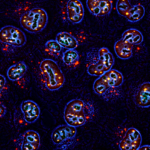Lien vers Pubmed [PMID] – 32735781
Lien DOI – 10.1016/j.neuron.2020.06.037
Neuron 2020 09; 107(6): 1141-1159.e7
Diabetic peripheral neuropathy (DPN) is a highly frequent and debilitating clinical complication of diabetes that lacks therapies. Cellular oxidative stress regulates post-translational modifications, including SUMOylation. Here, using unbiased screens, we identified key enzymes in metabolic pathways and ion channels as novel molecular targets of SUMOylation that critically regulated their activity. Sensory neurons of diabetic patients and diabetic mice demonstrated changes in the SUMOylation status of metabolic enzymes and ion channels. In support of this, profound metabolic dysfunction, accelerated neuropathology, and sensory loss were observed in diabetic gene-targeted mice selectively lacking the ability to SUMOylate proteins in peripheral sensory neurons. TRPV1 function was impaired by diabetes-induced de-SUMOylation as well as by metabolic imbalance elicited by de-SUMOylation of metabolic enzymes, facilitating diabetic sensory loss. Our results unexpectedly uncover an endogenous post-translational mechanism regulating diabetic neuropathy in patients and mouse models that protects against metabolic dysfunction, nerve damage, and altered sensory perception.


